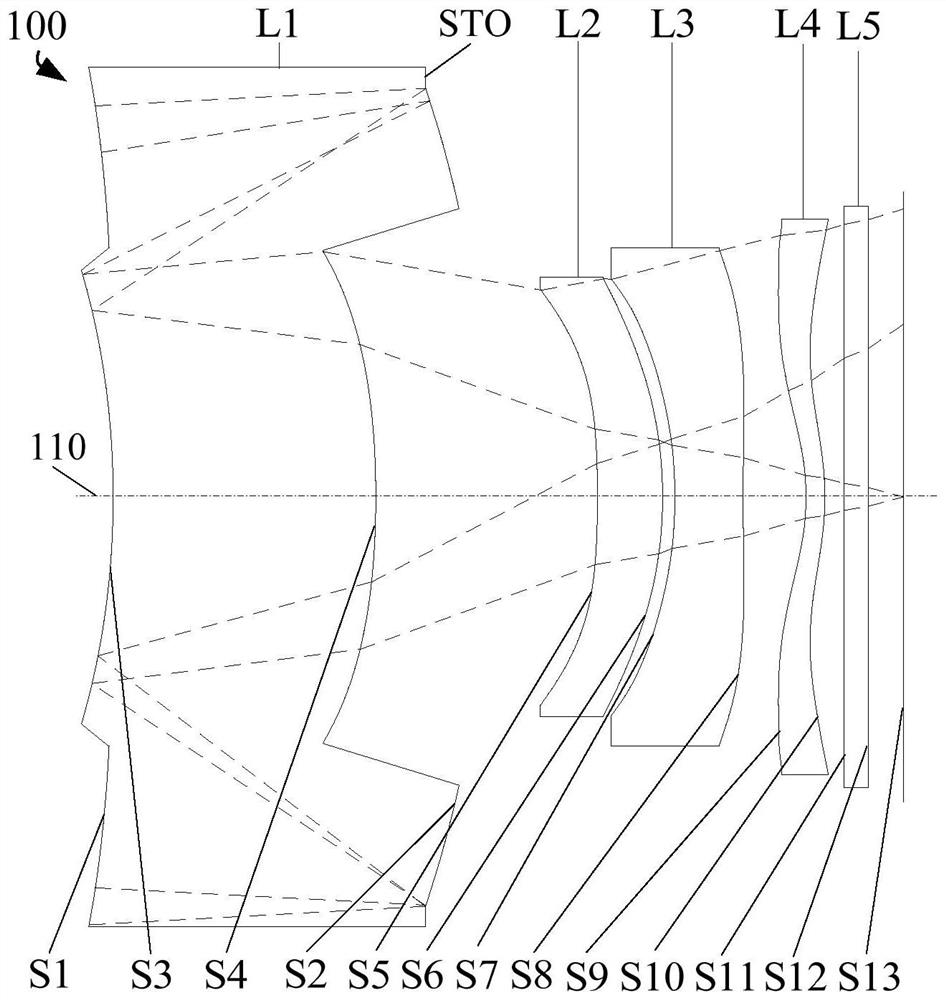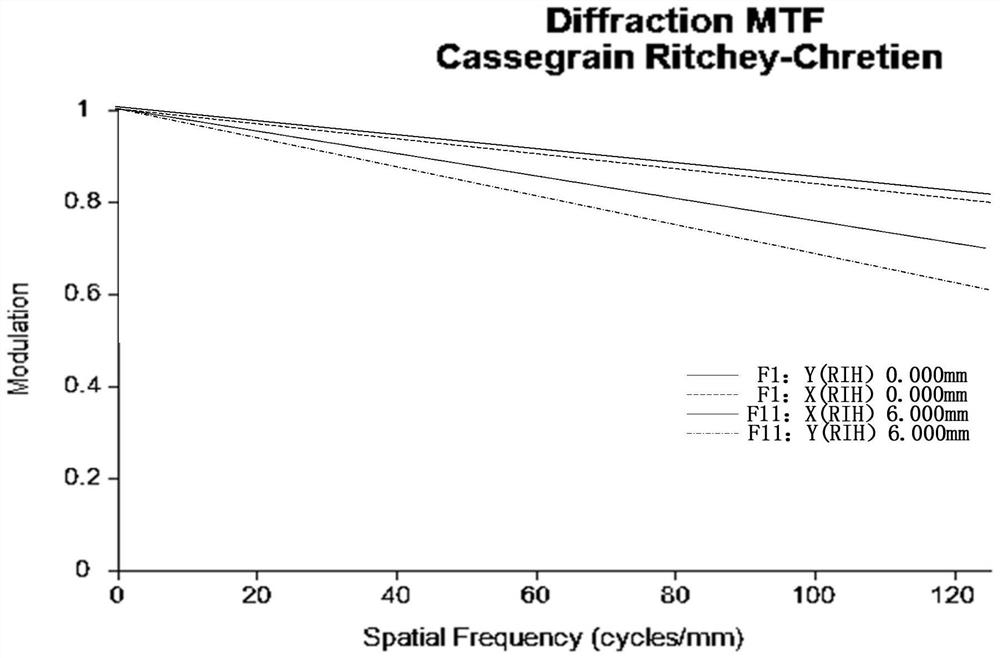Optical system, image capturing module and electronic device
An optical system and optical axis technology, which is applied in the field of photography, can solve the problems of increased volume of electronic equipment, large axial size of camera lens, unfavorable miniaturization design of electronic equipment, etc.
- Summary
- Abstract
- Description
- Claims
- Application Information
AI Technical Summary
Problems solved by technology
Method used
Image
Examples
no. 1 example
[0099] See figure 1 and figure 2 , figure 1 It is a schematic structural diagram of the optical system 100 in the first embodiment. The optical system 100 sequentially includes a catadioptric lens L1 with positive refractive power, a second lens L2 with positive refractive power, and a negative refractive power from the object side to the image side. The third lens L3 and the fourth lens L4 with negative refractive power. figure 2 From left to right are graphs of longitudinal spherical aberration, astigmatism, and distortion of the optical system 100 in the first embodiment, wherein the reference wavelength of the astigmatism graph and the distortion graph is 555 nm, and the other embodiments are the same. In the first embodiment, the diaphragm STO is disposed on the image side surface of the catadioptric lens L1, for example, on the periphery of the first reflecting surface S2, and other embodiments are also the same.
[0100] The first refraction surface S1 is a concave...
no. 2 example
[0138] See Figure 4 and Figure 5 , Figure 4 It is a schematic structural diagram of the optical system 100 in the second embodiment. The optical system 100 sequentially includes a catadioptric lens L1 with positive refractive power, a second lens L2 with positive refractive power, and a negative refractive power from the object side to the image side. The third lens L3 and the fourth lens L4 with negative refractive power. Figure 5 From left to right are graphs of longitudinal spherical aberration, astigmatism and distortion of the optical system 100 in the second embodiment.
[0139] The first refraction surface S1 is a concave surface at the near optical axis 110, and a concave surface at the circumference;
[0140] The first reflecting surface S2 is a convex surface at the near-optical axis 110, and is a convex surface at the circumference;
[0141] The second reflective surface S3 is a concave surface at the near optical axis 110, and a concave surface at the circu...
no. 3 example
[0162] See Figure 7 and Figure 8 , Figure 7 It is a schematic structural diagram of the optical system 100 in the third embodiment. The optical system 100 sequentially includes a catadioptric lens L1 with positive refractive power, a second lens L2 with positive refractive power, and a negative refractive power from the object side to the image side. The third lens L3 and the fourth lens L4 with negative refractive power. Figure 8 From left to right are graphs of longitudinal spherical aberration, astigmatism and distortion of the optical system 100 in the third embodiment.
[0163] The first refraction surface S1 is a concave surface at the near optical axis 110, and a concave surface at the circumference;
[0164] The first reflecting surface S2 is a convex surface at the near-optical axis 110, and is a convex surface at the circumference;
[0165] The second reflective surface S3 is a concave surface at the near optical axis 110, and a concave surface at the circumf...
PUM
 Login to View More
Login to View More Abstract
Description
Claims
Application Information
 Login to View More
Login to View More - R&D
- Intellectual Property
- Life Sciences
- Materials
- Tech Scout
- Unparalleled Data Quality
- Higher Quality Content
- 60% Fewer Hallucinations
Browse by: Latest US Patents, China's latest patents, Technical Efficacy Thesaurus, Application Domain, Technology Topic, Popular Technical Reports.
© 2025 PatSnap. All rights reserved.Legal|Privacy policy|Modern Slavery Act Transparency Statement|Sitemap|About US| Contact US: help@patsnap.com



